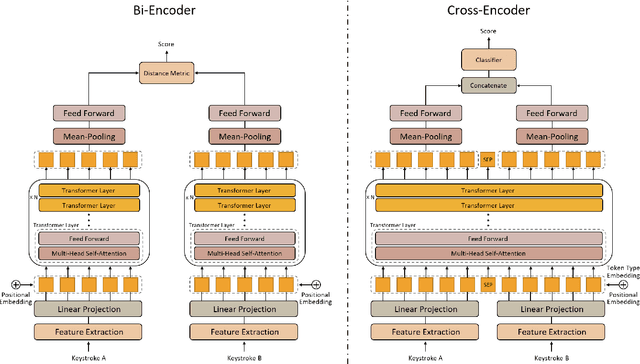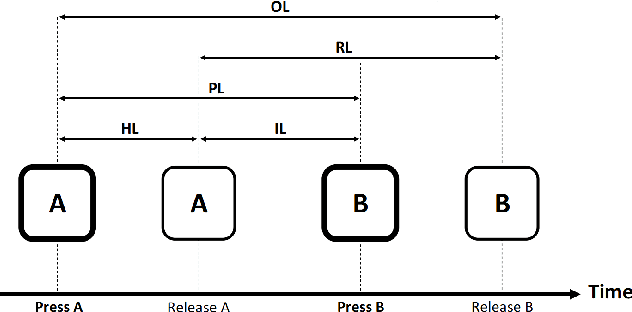Free-text Keystroke Authentication using Transformers: A Comparative Study of Architectures and Loss Functions
Paper and Code
Oct 18, 2023



Keystroke biometrics is a promising approach for user identification and verification, leveraging the unique patterns in individuals' typing behavior. In this paper, we propose a Transformer-based network that employs self-attention to extract informative features from keystroke sequences, surpassing the performance of traditional Recurrent Neural Networks. We explore two distinct architectures, namely bi-encoder and cross-encoder, and compare their effectiveness in keystroke authentication. Furthermore, we investigate different loss functions, including triplet, batch-all triplet, and WDCL loss, along with various distance metrics such as Euclidean, Manhattan, and cosine distances. These experiments allow us to optimize the training process and enhance the performance of our model. To evaluate our proposed model, we employ the Aalto desktop keystroke dataset. The results demonstrate that the bi-encoder architecture with batch-all triplet loss and cosine distance achieves the best performance, yielding an exceptional Equal Error Rate of 0.0186%. Furthermore, alternative algorithms for calculating similarity scores are explored to enhance accuracy. Notably, the utilization of a one-class Support Vector Machine reduces the Equal Error Rate to an impressive 0.0163%. The outcomes of this study indicate that our model surpasses the previous state-of-the-art in free-text keystroke authentication. These findings contribute to advancing the field of keystroke authentication and offer practical implications for secure user verification systems.
 Add to Chrome
Add to Chrome Add to Firefox
Add to Firefox Add to Edge
Add to Edge